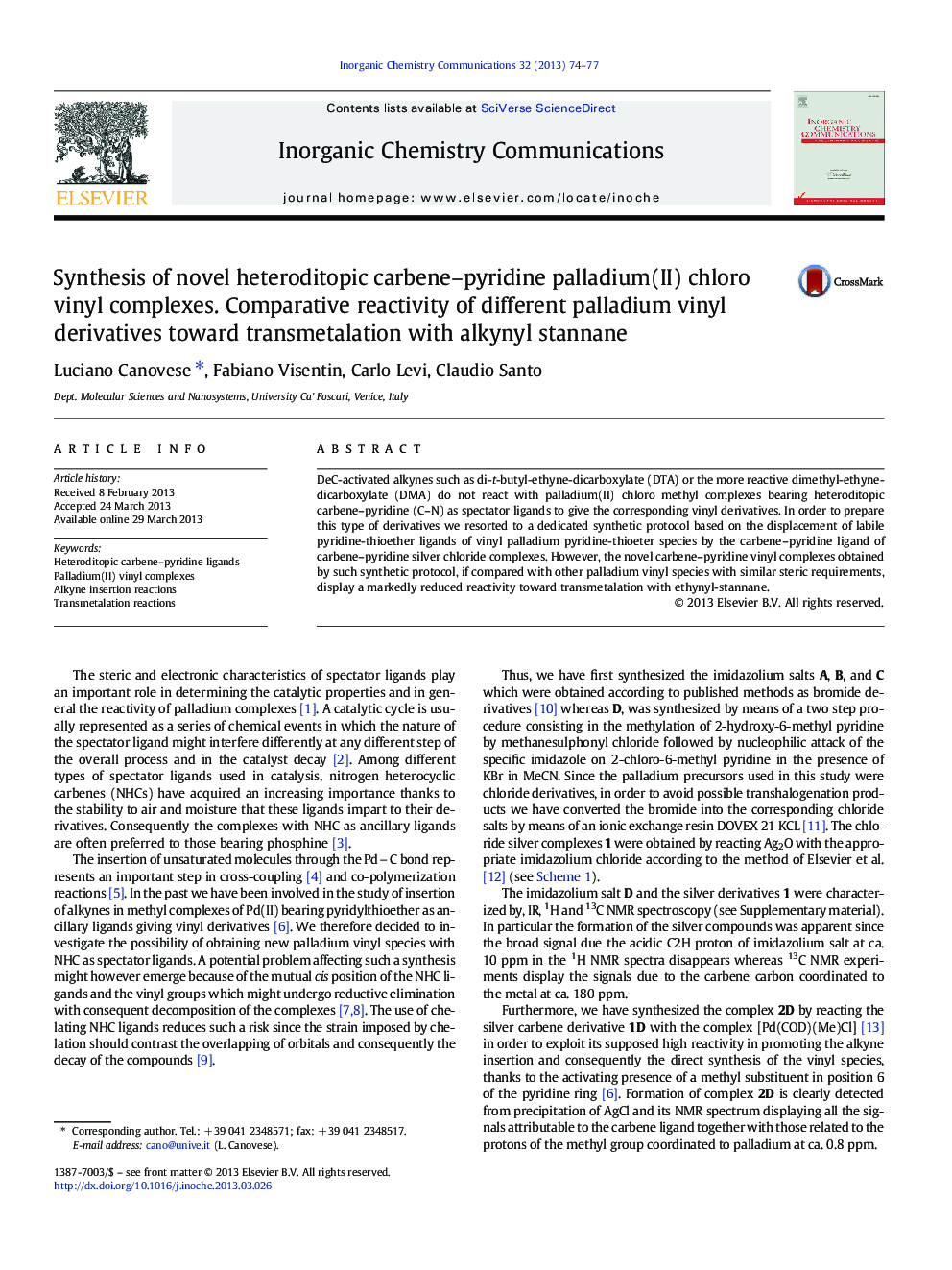| کد مقاله | کد نشریه | سال انتشار | مقاله انگلیسی | نسخه تمام متن |
|---|---|---|---|---|
| 1303800 | 1498958 | 2013 | 4 صفحه PDF | دانلود رایگان |

• Vinyl derivatives of Palladium was synthesized by means of ligand exchange.
• The complexes [Pd(R-NHC-CH2-Py)(ZCCZ)Cl] (Z COOMe, COOtBu) were synthesized.
• The transmetalation reactivity of the above complexes with stannane was determined.
DeC-activated alkynes such as di-t-butyl-ethyne-dicarboxylate (DTA) or the more reactive dimethyl-ethyne-dicarboxylate (DMA) do not react with palladium(II) chloro methyl complexes bearing heteroditopic carbene–pyridine (C–N) as spectator ligands to give the corresponding vinyl derivatives. In order to prepare this type of derivatives we resorted to a dedicated synthetic protocol based on the displacement of labile pyridine-thioether ligands of vinyl palladium pyridine-thioeter species by the carbene–pyridine ligand of carbene–pyridine silver chloride complexes. However, the novel carbene–pyridine vinyl complexes obtained by such synthetic protocol, if compared with other palladium vinyl species with similar steric requirements, display a markedly reduced reactivity toward transmetalation with ethynyl-stannane.
Different palladium(II) vinyl complexes were synthetized and their reactivity toward transmetalation with alkynyl stannane was studied.Figure optionsDownload as PowerPoint slide
Journal: Inorganic Chemistry Communications - Volume 32, June 2013, Pages 74–77